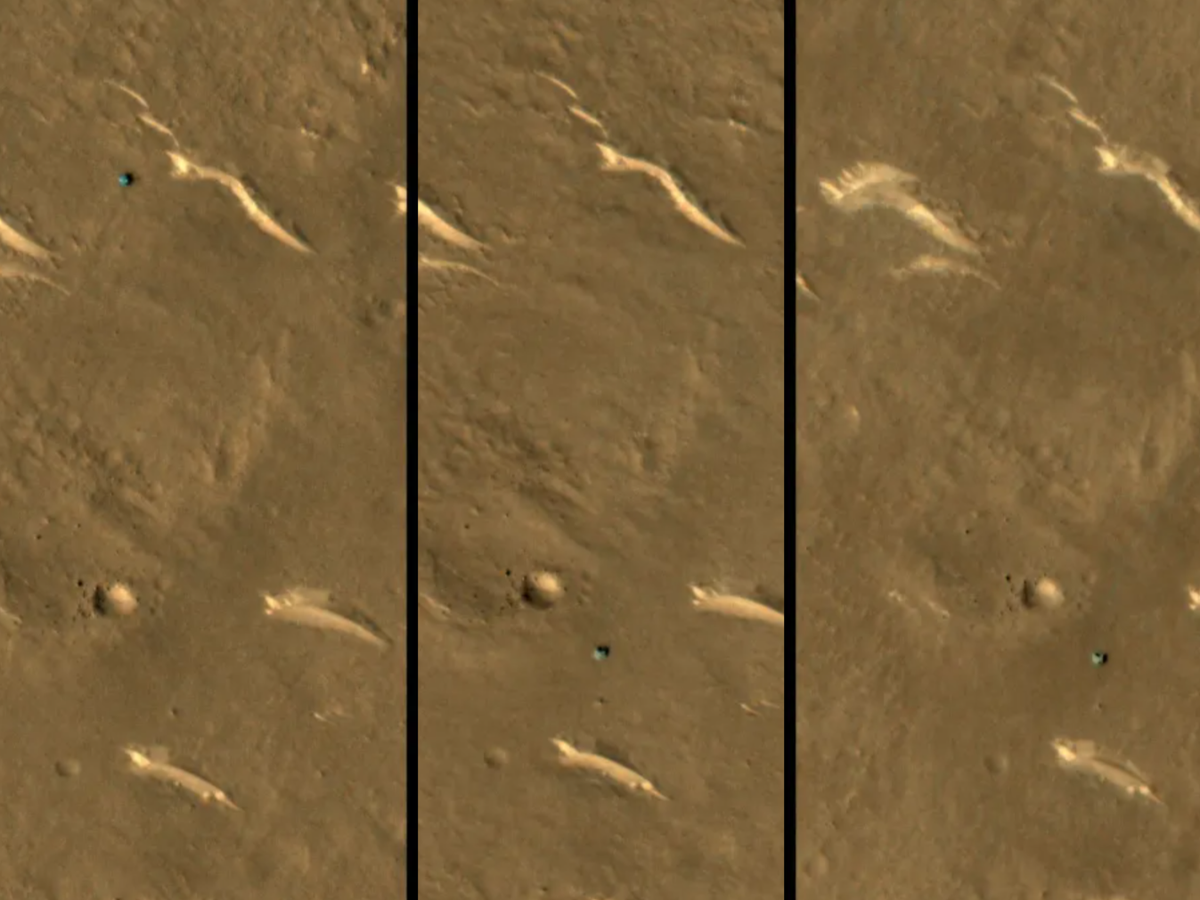China’s Mars rover hasn’t moved in months

A Chinese rover on Mars has not moved for nearly six months, according to images captured by Nasa.
A time series taken by the US space agency’s Mars Reconnaissance Orbiter between September 2022 and February 2023 shows that China’s Zhurong rover remained immobile on the Red Planet during that entire period.
Zhurong landed on Mars in May 2021 as part of the Tianwen-1 mission, with a goal of studying the topography, examining the Martian soil, surveying the elements and sampling the atmosphere.
The solar-powered rover travelled roughly 2km from its landing site on the Utopia Planitia plain before it came to a stop.
Its stationary position was revealed by the High Resolution Imaging Science Experiment (HiRISE) camera aboard the orbiter, operated by researchers at Nasa’s Jet Propulsion Laboratory at Caltech and the University of Arizona.
“HiRISE is often used to observe changes to dust-covered areas near Mars surface missions,” scientists at the University of Arizona wrote in a blog post detailing their findings.
“This time series shows that the [Zhurong] rover has not changed its position between 8 September and 7 February 2023.”
The photos show the rover appearing as a blue-ish dot near a crater on the surface of Mars.
Tianwen 1 is China’s first interplanetary mission, however there has not been an update or any new images from the Zhurong rover for several months.
The South China Morning Post reported in January that the mission team had not received a signal from Zhurong since it went into a planned hibernation last May when solar radiation levels on the planet are low.
It has already completed its primary mission but was meant to resume extra missions in December when solar radiation returned to a level that could adequately power its solar panels. One theory among astronomers is that Martian dust on the panels and cleaning “windows” could prevent it from charging.


